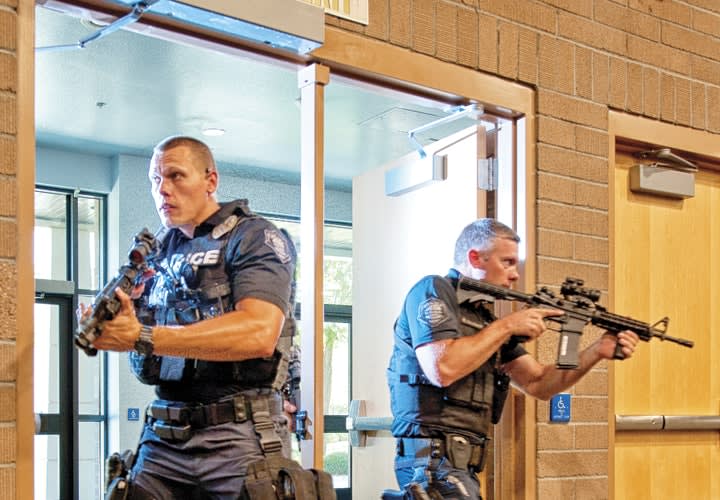Joint police, fire, EMS response to active shooters is one of the focuses of training offered by Concord, N.C.-based Threat Suppression Inc. The company's CEO Michael Clumpner is a sworn law enforcement officer, a fire captain, and a paramedic. Clumpner sees many benefits from officers cross-training with fire department personnel in active shooter response drills. "Sometimes police just don't think about tools the fire department has for breaching doors," Clumpner says. It's clear from looking at recent active shooter incidents that the attackers have put thought into blocking or slowing down police response. Breaching, removing obstacles, and planning for obstructions should be in the officers' training. Fire personnel have tools for defeating such obstructions, and through cross-training, officers can learn about these tools and how to use them.
Fire departments also have special keys to get through gates and take control of elevators. Clumpner has trained hundreds of officers who police areas with multi-floor office buildings. "I'm surprised at how many officers don't think about controlling the elevator banks when they're clearing a building," he says.
Clumpner's Threat Suppression group also works with businesses to develop security plans and train employees on what to do. He says businesses can learn a lot from schools when it comes to safety planning. "Most businesses have some basic plans for an outside attack, but they don't take into account the attack that may emanate from inside the business," he says. "You can't ignore that a disgruntled employee who's already inside the business can turn violent." There's also the possibility of family violence that can creep into the workplace. These scenarios are much more likely than an active shooter coming through the front door of a business.
In 2009 in Binghamton, N.Y., a lone gunman entered an immigration assistance center and began shooting, unleashing an armed assault on rooms full of people. Police responded within three minutes of the first emergency call for help. But it would be another 40 minutes before they made entry. The officers arrived at the scene and, as trained, gathered intelligence and waited for any stimuli that indicated that an active shooter was inside the building. None was heard. Shortly after, the assailant quickly killed 13 people and wounded several others before shooting himself.
The officers waiting outside did not realize the gunman had killed himself. As trained, they waited for the tactical resources before entering the building. The department has been criticized for the delay. The critics couldn't understand why, in a post-Columbine world, officers waited outside for 40 minutes before going in to rescue the victims.













